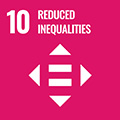- Docente: Carlo Caini
- Credits: 9
- SSD: ING-INF/03
- Language: Italian
- Teaching Mode: Traditional lectures
- Campus: Bologna
- Corso: First cycle degree programme (L) in Computer Engineering (cod. 9254)
-
from Feb 17, 2025 to Jun 13, 2025
Learning outcomes
Basic knowledge on Fourier analysis (continous- and discrete-time signals) and linear systems. Introduction to communication networks. Introduction to ISO-OSI model and TCP/IP protcols.
Course contents
Fourier Analysis (time-continuous signals)
Analysis in the frequency domain of deterministic time-continuous signals. Fourier Series; Fourier Transforms; Dirac's Delta; Fourier transform of distributions (generalized functions), step signals and periodic signals.
Fourier Analysis (time-discrete signals)
Analysis in the frequency domain of deterministic time-discrete signals. Discrete-Time Fourier Transform (DTFT), Nyquist-Shannon's sampling theorem, Shannon's series, Discrete Fourier Transform (DFT), FFT.
Linear systems
Definition of linearity. Impulse response and transfer function of time-invarying linear systems. Non distortion conditions. Ideal, real and FIR filters.
Analog to digital conversion
Analog to digital conversion (PCM).
Generalized Fourier Analysis
Cross and auto correlation functions of deterministic signals. Energy and power spectra.
Modulation Theory
Introduction; analogue modulations (AM, PM, FM, DSB-SC, QAM).
Digital signals
Digital PAM signals. Power spectra of deterministic PAM signals. Extension to ergodic random signals. Bipolar and multi-level encoding, power spectra of multi-level PAM signals. Basic elements of digital modulations, including OFDM. General description of phisical layer of WiFi (IEEE 802.11n, ac and ax).
ISO-OSI model and TCP-IP protocols
Network architectures: layers, protocols and services. ISO-OSI and TCP-IP models.
Layer 2 (link)
Link layer services. Basics of Ethernet (10, 100 e 1000 Mbit/s); CSMA/CD protocol; basics of IEEE 802.11 (WiFi); CSMA-CA protocol, MAC addresses, hubs e switches. The ARP protocol.
Layer 3 (Network)
Network layer services; connection oriented and connectionless protocols (datagram); logical addresses, routing tables, IPv4, basics of IPv6; IP forwarding, NATs.
Layer 4 (Transport)
Transport services; UDP and TCP protocols (ACK, retransmission mechanisms, flow control, congestion control); ports.
DTN
Basics of “challenged networks” and of DTN (Delay-/Disruption-Tolerant Networking) architecture.
Readings/Bibliography
Lecture notes (in Italian only) provided via web (IOL) on the first part of the course.
Slides provided via web (IOL) on the second part of the course.
Recommended reference for the second part of the course:
A.S. Tanenbaum, N. Feamster, D.J. Weterhall, “Computer Networks”, Pearsons, 6th edition, 2021
Teaching methods
Lectures and lab activities.
All students are required to attend Modules 1 and 2 on safety rules in teaching environments, available at the following link:
[https://outlook.office.com/owa/redir.aspx?REF=Ez122Te1xBnDnkZ6mAqqUPYpJXCCWWu1LeSkDxP4immeIyJZiWXaCAFodHRwczovL2VsZWFybmluZy1zaWN1cmV6emEudW5pYm8uaXQv] .
Assessment methods
Written and oral examinations. No intermediate (i.e. during the courses) assessments. The examinations will be carried out in January, February, June-July (3 dates), September. The questions of the written test (in Italian only) may include quizzes, theory questions and excercises. The oral examination is compulsory and will follow on the same day or on the next few days.
Teaching tools
Goldwave audio editor for activities related to audio signals and linear systems. Wireshark protcol analyzer for TCP/IP protcol analysis. Other programs and Excel spreadsheets.
Office hours
See the website of Carlo Caini
SDGs



This teaching activity contributes to the achievement of the Sustainable Development Goals of the UN 2030 Agenda.
